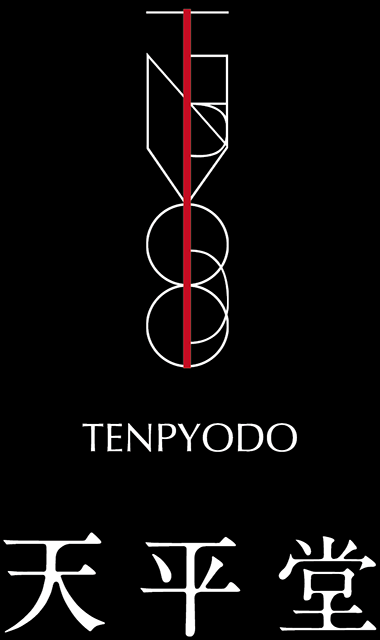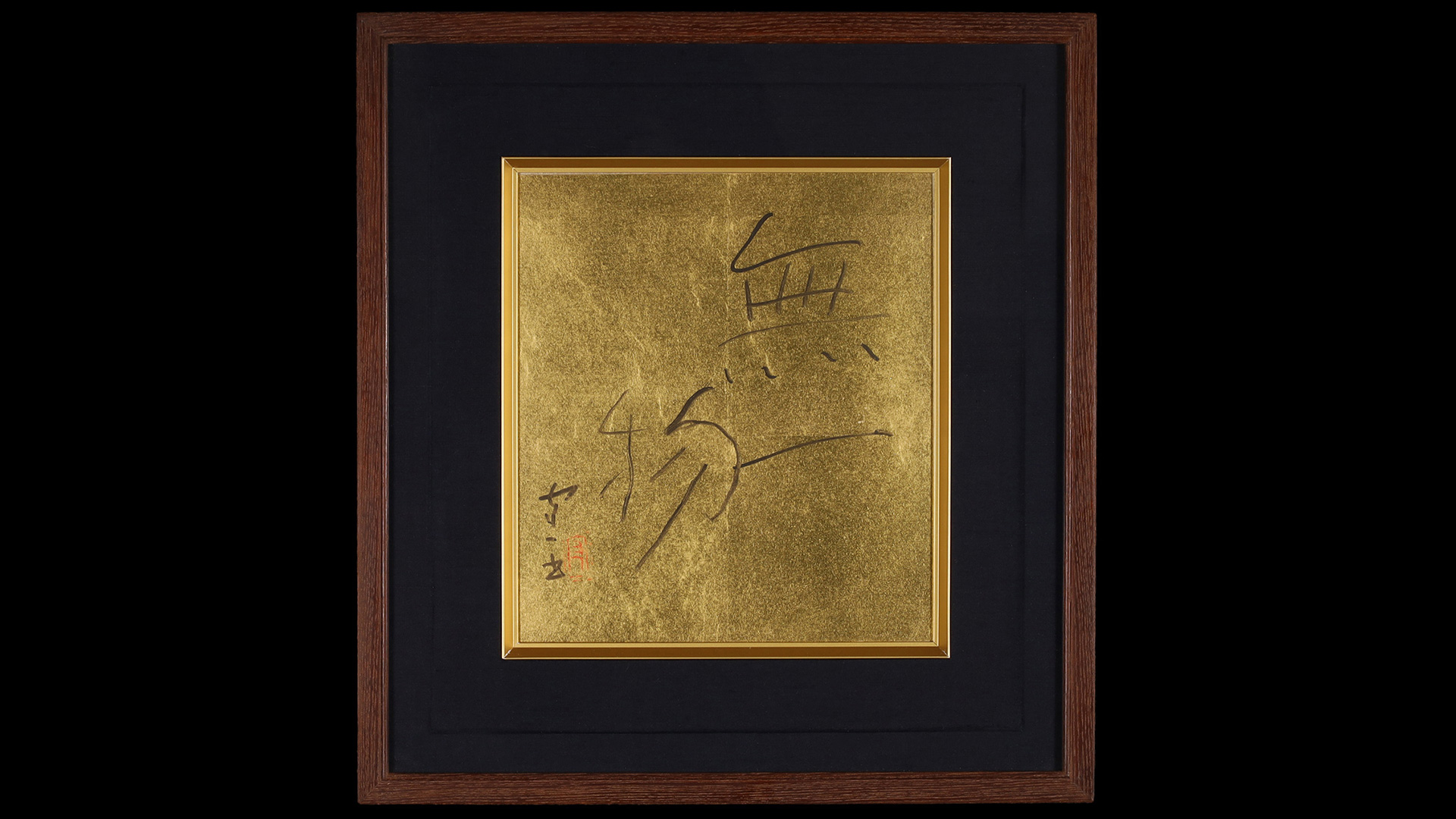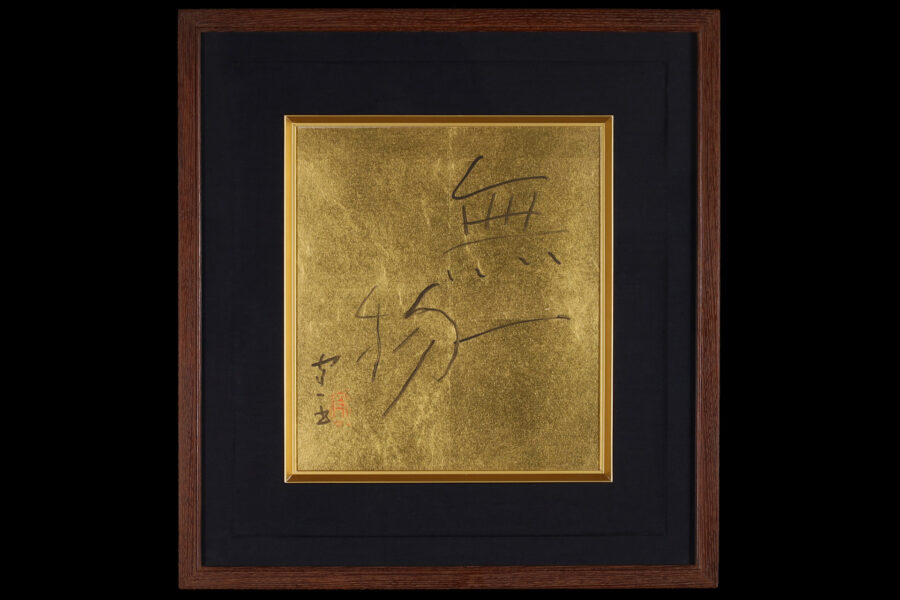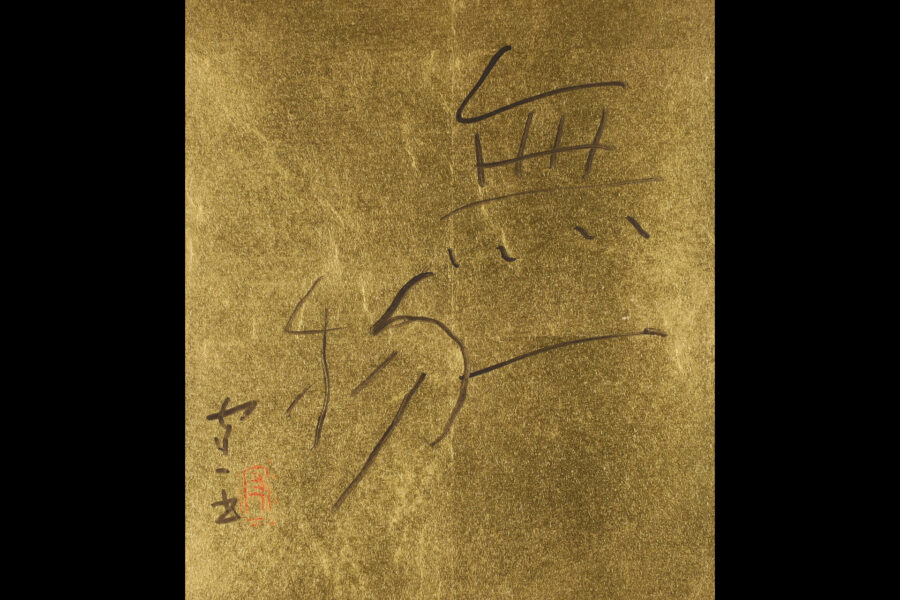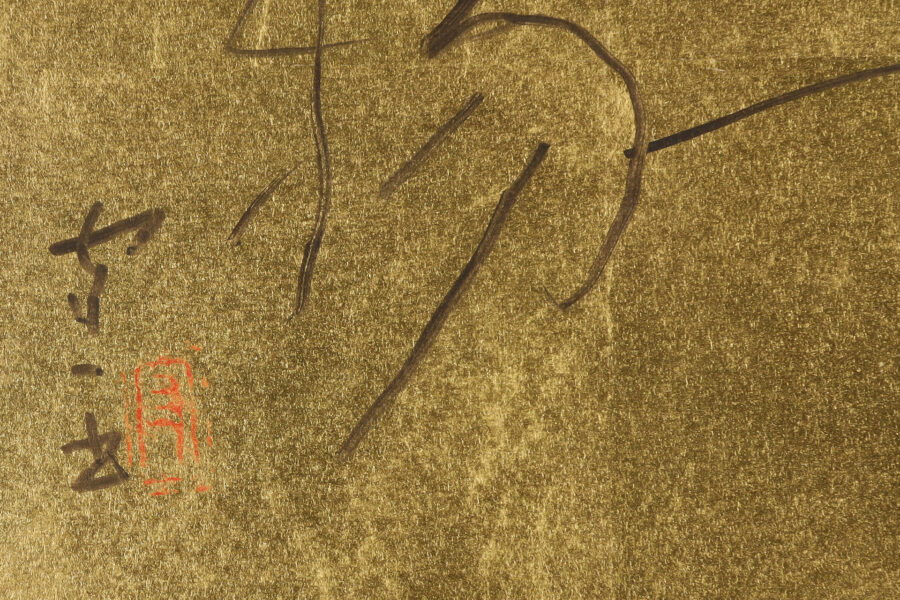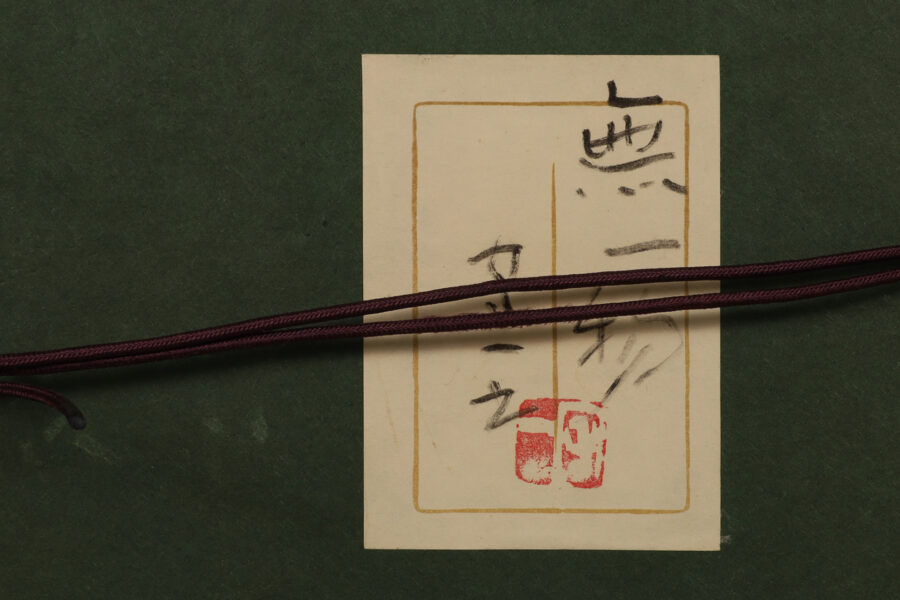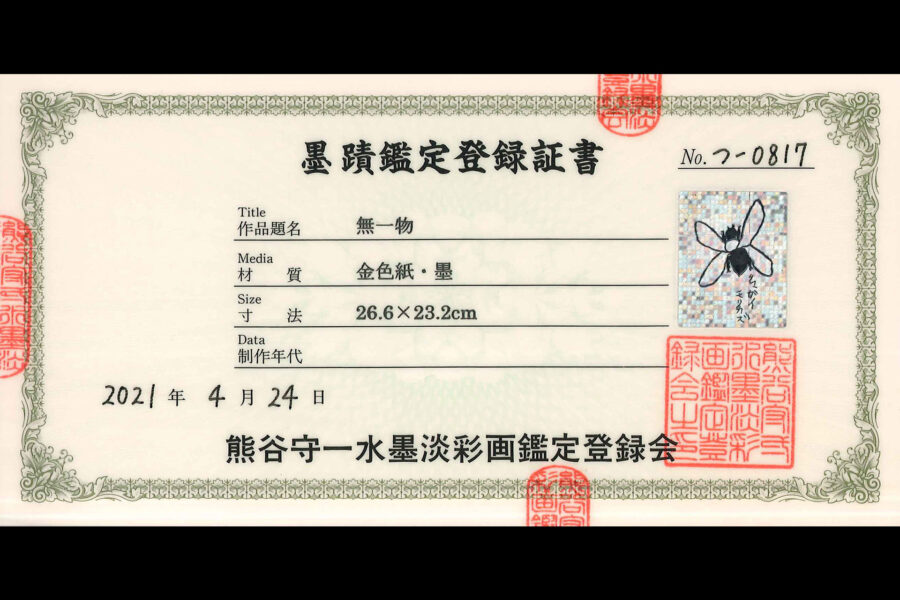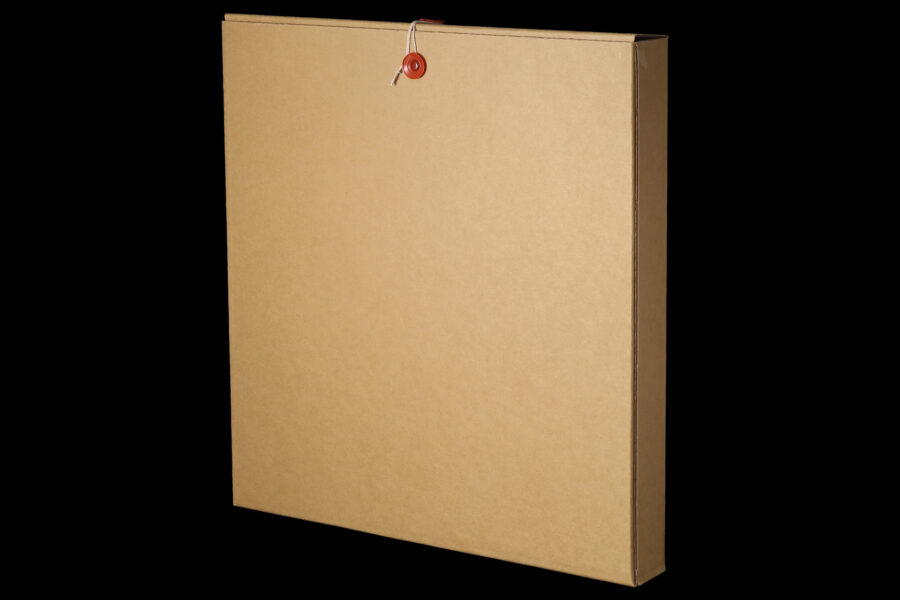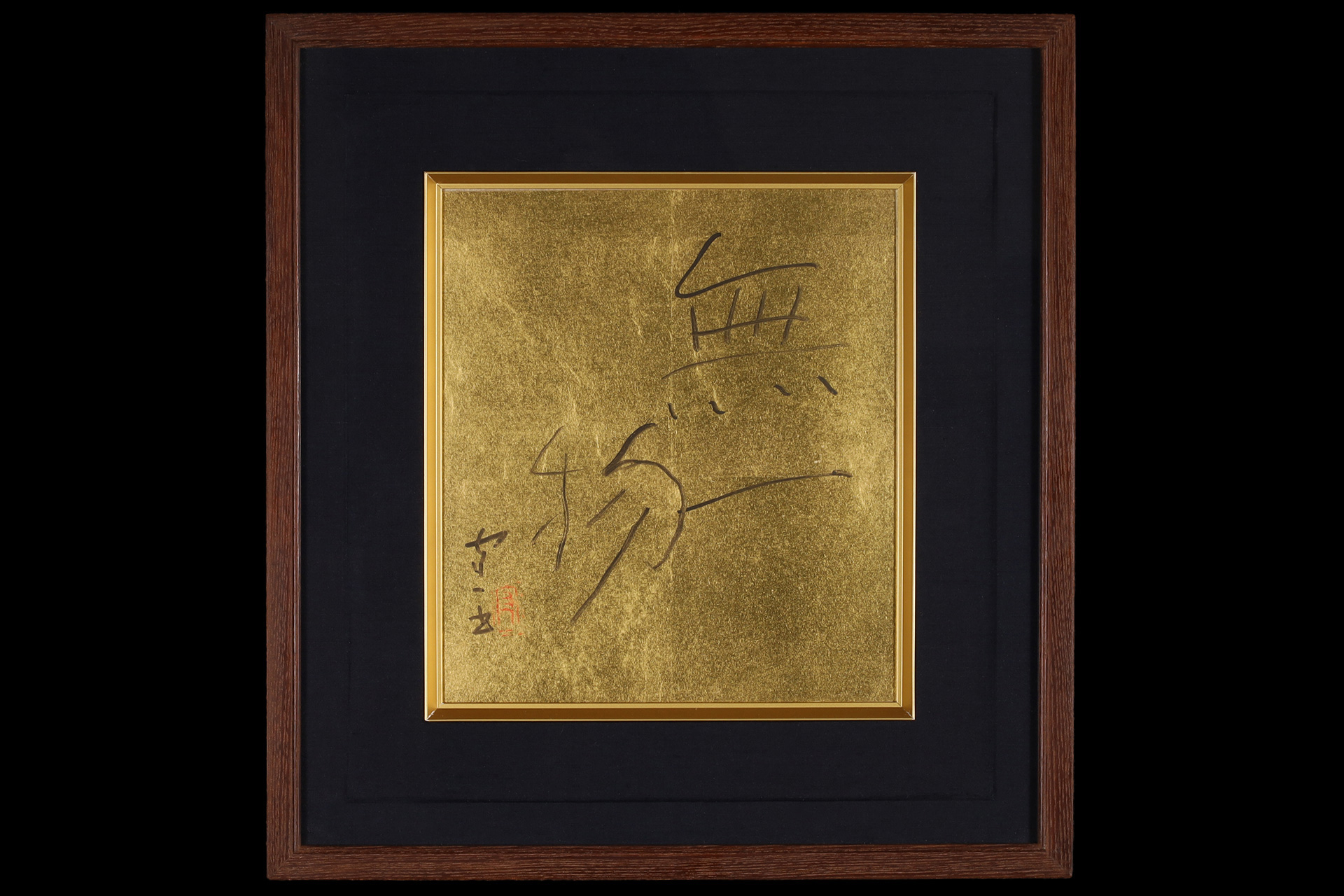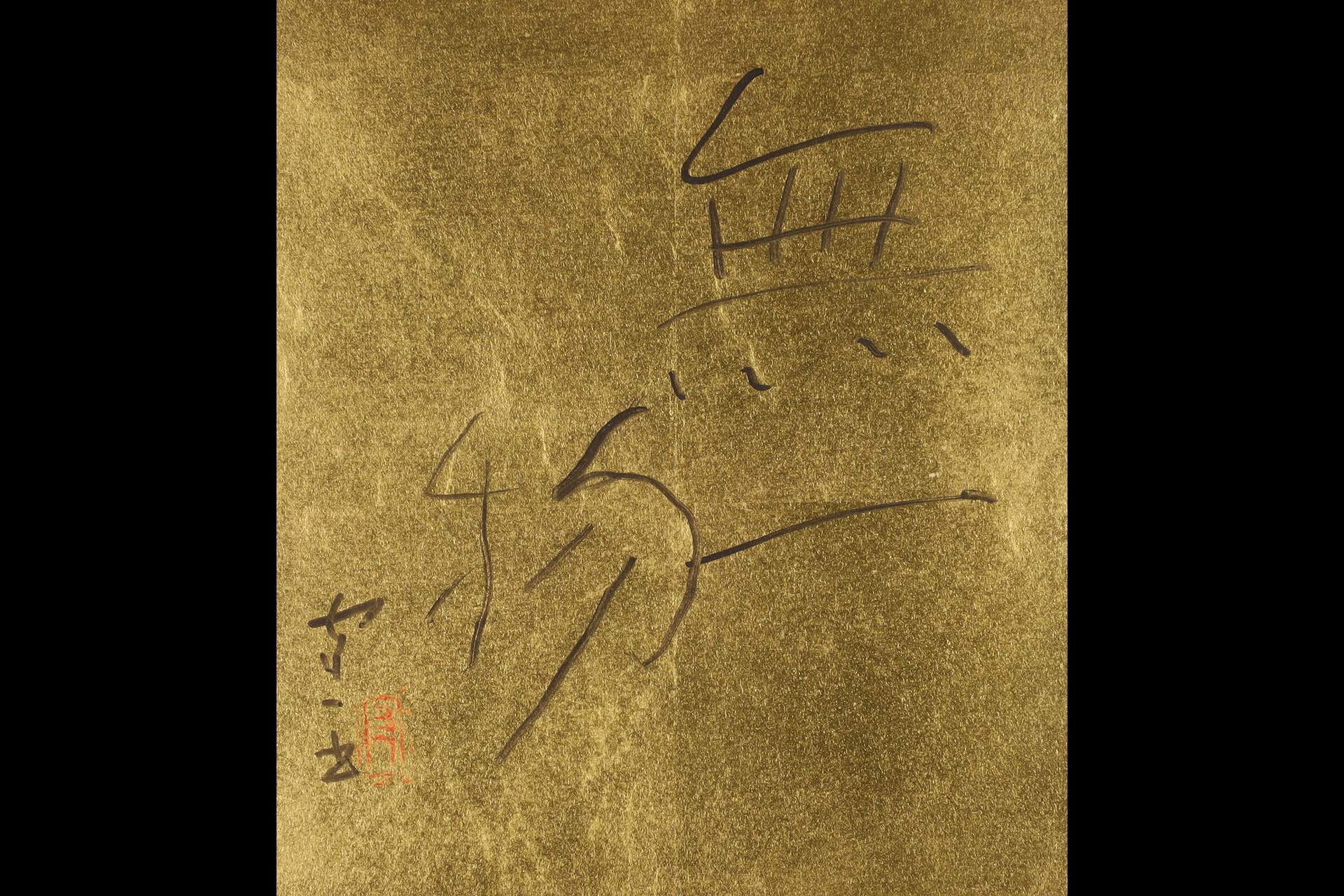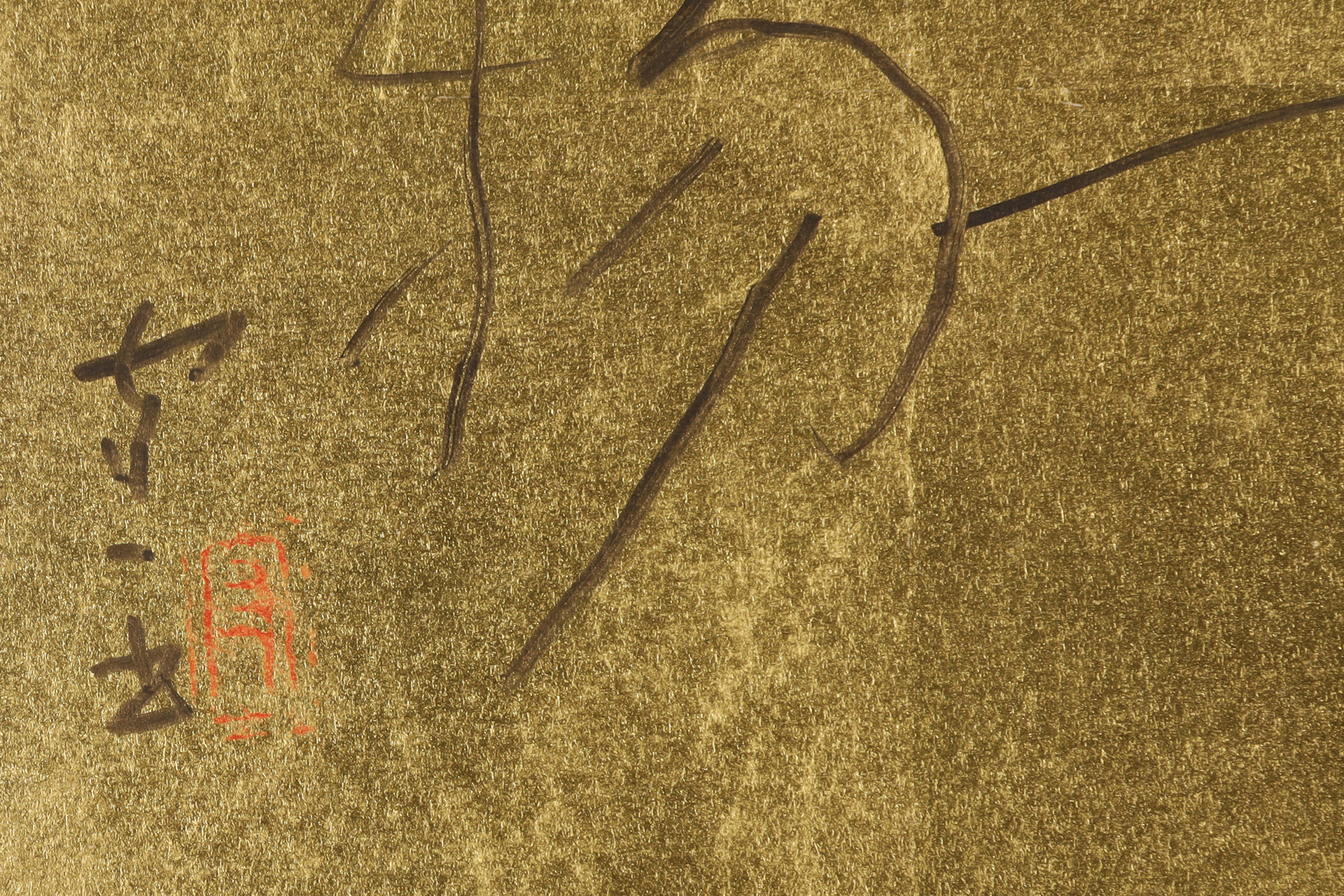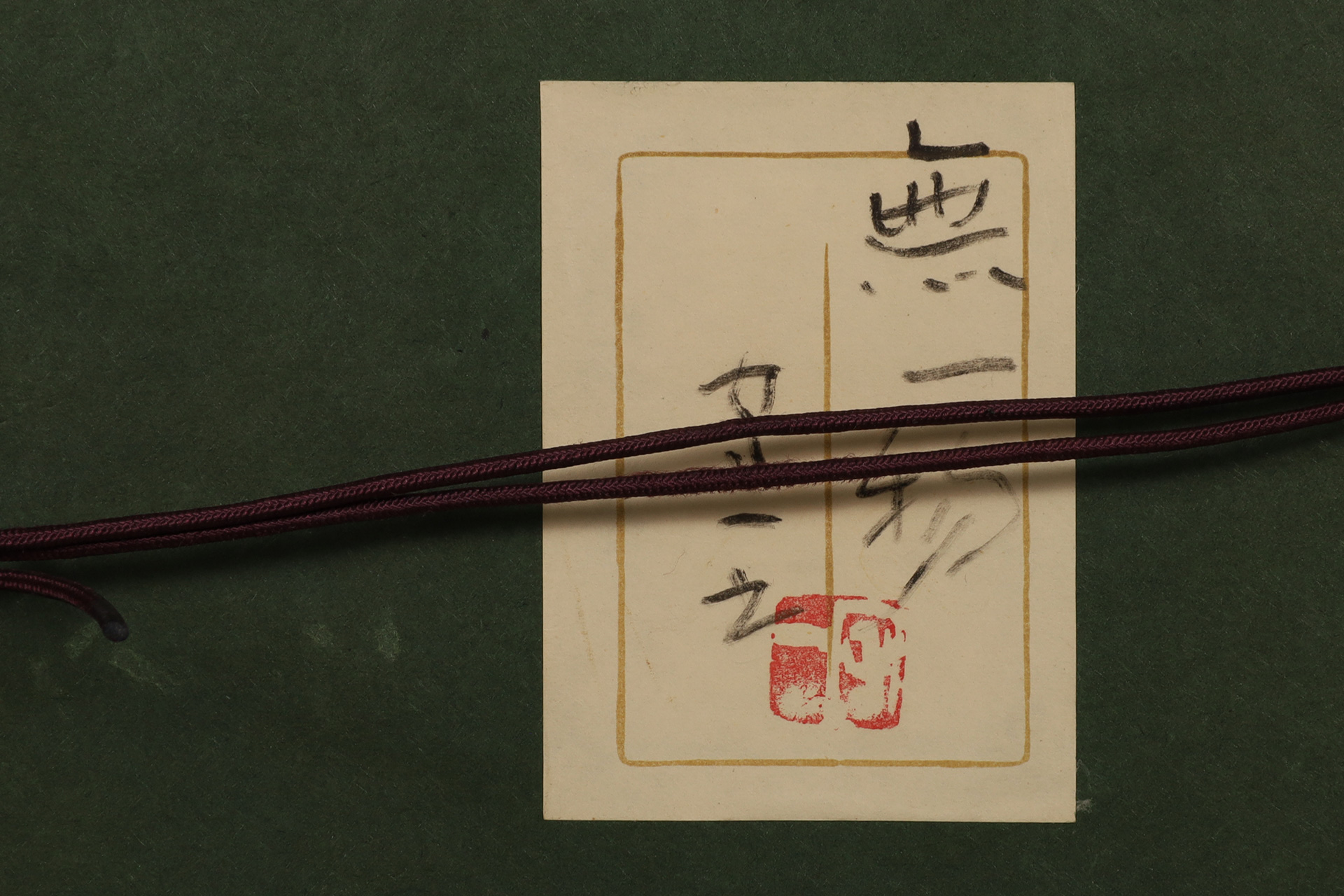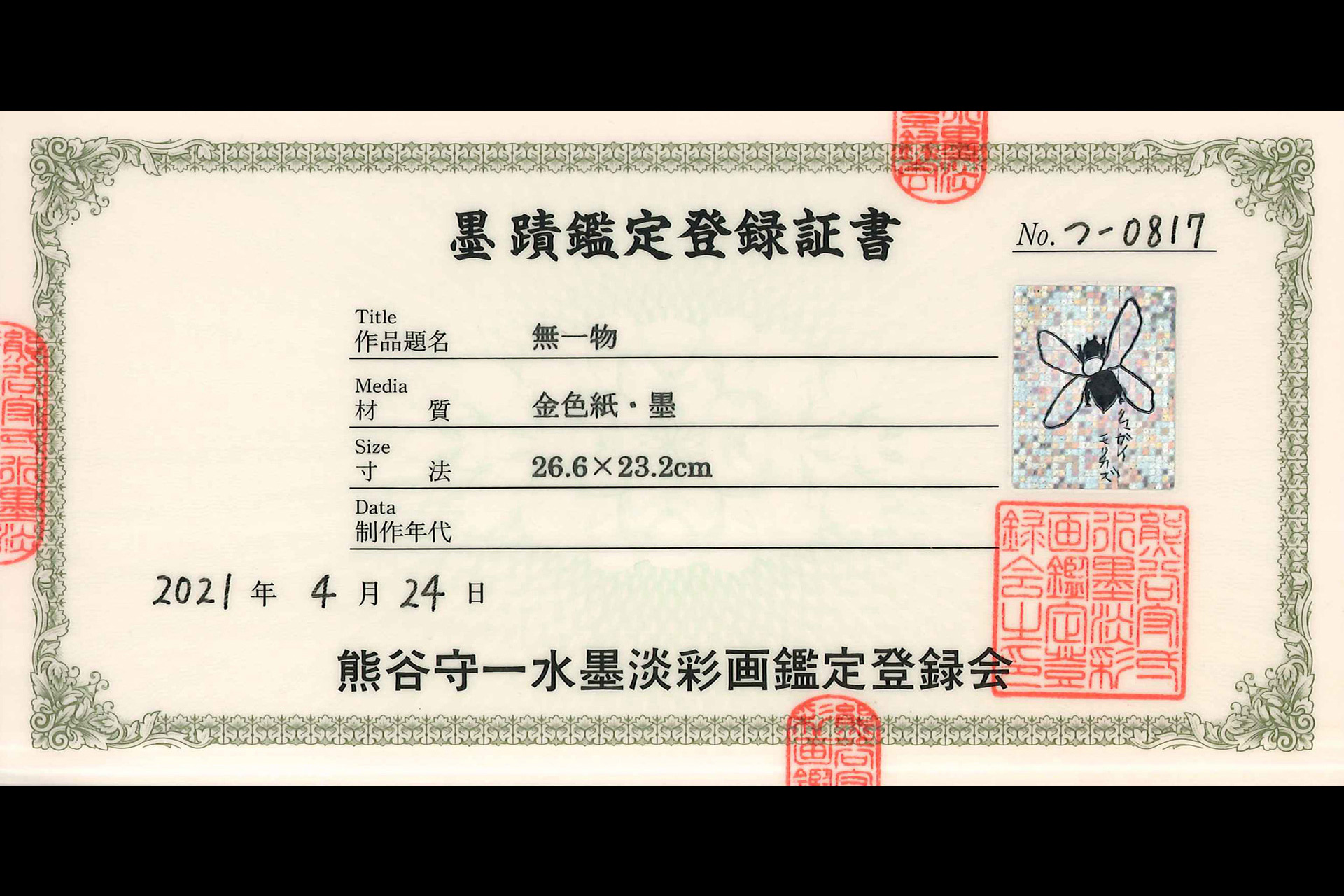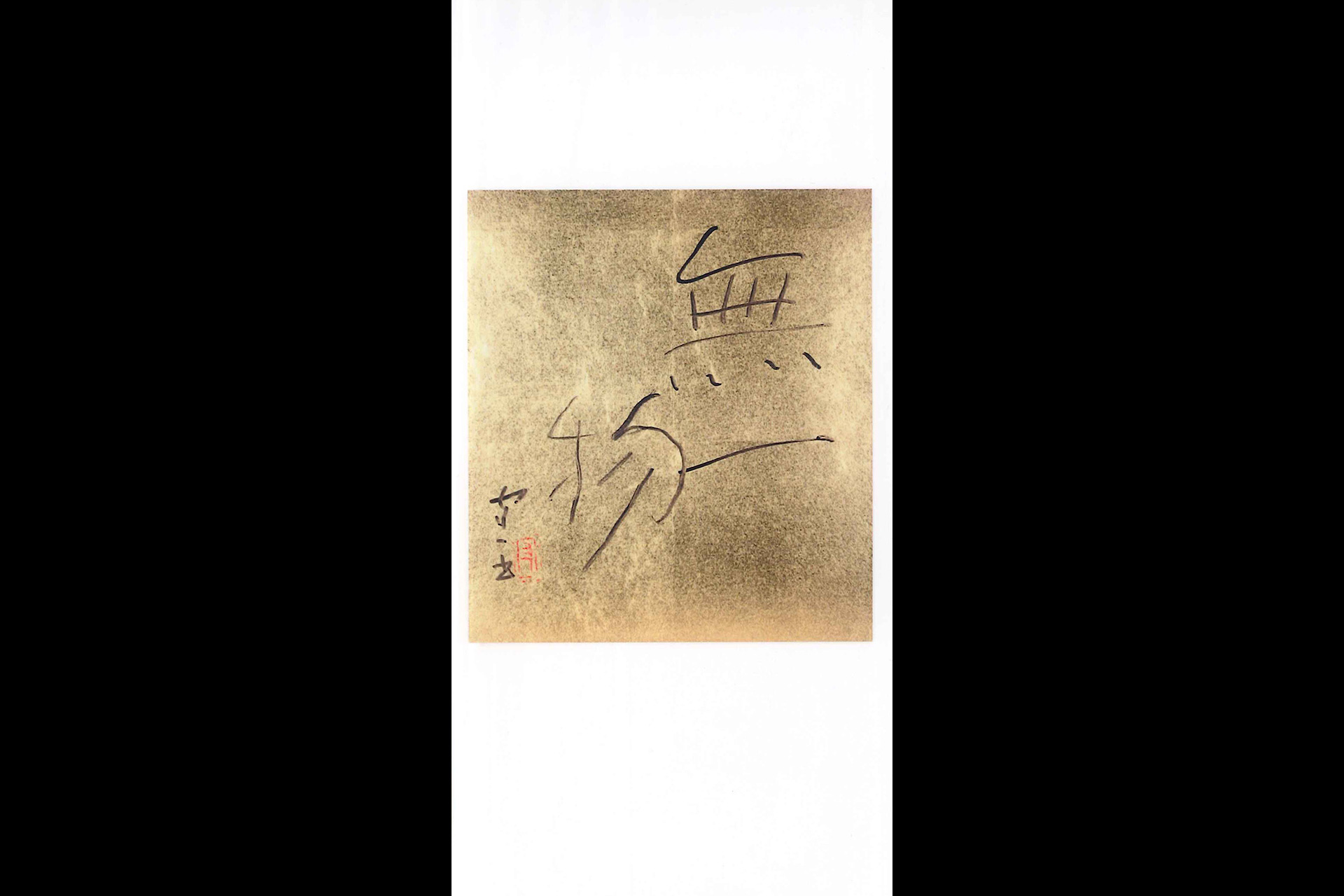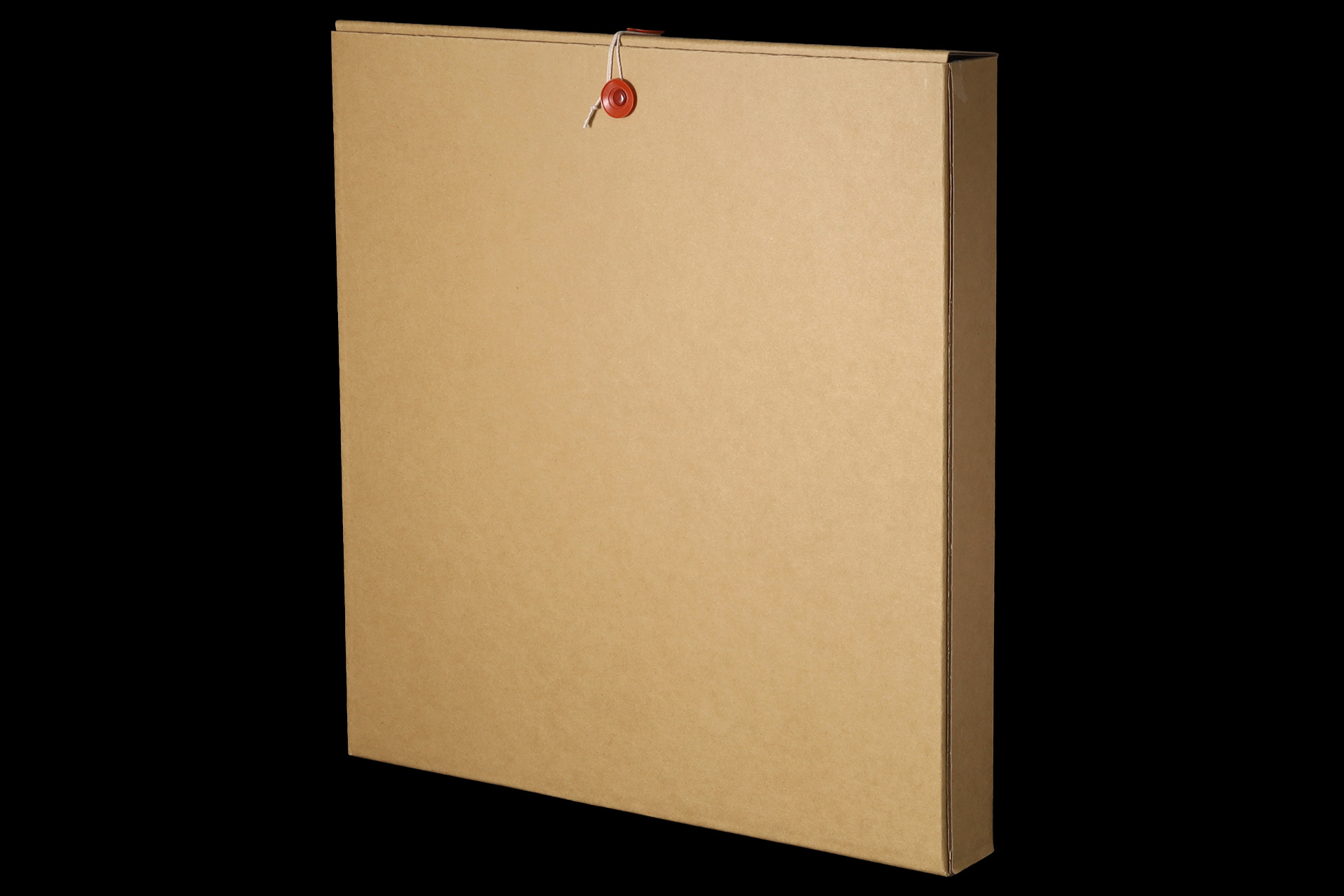"Muichimotsu" is a favorite word of Morikazu Kumagai, who had no regard for greed or fame. Known as the "Hermit of the Art World", he declined the order of culture and the third class order because he "I don't want more people to come to visit me", and he valued creative freedom more than honor. It symbolizes Morikazu's state of mind, free from all worldly desires and having nothing to cling to. Kumagai's art, which captures the essence of things with a pure and innocent heart, continues to fascinate the hearts of many people.
Inquiry
- Product Code
- 241220-2
- Artist
- Morikatsu Kumagai
1880-1977
- Weight
- 1,970g
- Paper Size
- (Vertical)26.6×(Width)23.2cm
- Framed Picture Size
- (Vertical)45.0×(Width)42.0cm
- Note
- Ink on Gold Paper
- Description
- Seal with Artist's Sign
「Morikazu Kumagai Watercolor on Paper Appraisal Registration Association」Appraisal Registration Certificate(つ-0817)
Cardboard Box
- Condition
- Good
Morikazu Kumagai 1880-1977
Morikazu Kumagai was born in gifu prefecture as the third son of Magorokuro Kumagai.
His father served as the first mayor of gifu and a member of the house of representatives, and was wealthy as he ran the Kumagai Silk Factory. Contrary to his father’s wish for him to follow in his footsteps, aspires to be a painter.
In 1900, entered the Tokyo School of Fine Arts, Western Painting Department, and studied under the Seiki Kuroda Seiki and Takeji Fujishima. There were Shigeru Aoki, Sanzo Wada, and others in the same period.
In 1902, his father died suddenly of a stroke, leaving him with huge debts.
In 1904, after graduating from Tokyo School of Fine Arts, Western Painting Department.
In 1905, made a living by working as a record artist for the sakhalin fishing grounds survey team during the russo-japanese war.
In 1909, “Candle” received the award at the Bunten.
In 1910, returned home after hearing that his mother was critically ill, and remained in hometown even after her death.
In 1915, returned to Tokyo and received continued financial support from fellow painters.
In 1922, married Hideko Oe.
From around 1930, began painting ink paintings, and in later years also took up calligraphy.
In 1932, moved to nagasaki-machi, toshima-ku, tokyo, and spent the rest of life in this house.
In 1937, started to paint japanese paintings.
In 1940, established a unique style of oil painting using contours and flat surfaces.
In 1947, participated in the establishment of the “Niki-kai”.
In 1951, withdrew the Niki-kai.
In 1967, declined the Order of Culture because, “I don’t want more people to come”.
In 1972, declined the Order of the Third Class.
In 1976, “Kumagai Morikazu Memorial Museum” was established in his hometown, tsukechi-cho, nakatsugawa-shi, gifu prefecture.
*In 2015, It has been renovated and reopened as the “Kumagai Tsukechi Gallery”.
In 1985, “Kumagai Morikazu Museum of Art” was established on the site of his former home in chihaya, toshima-ku, where he lived for 45 years.
Although his talent was recognized from an early age, never sought fame, and it was not until was in his fifties and had moved to toshima-ku that was able to support his family with his paintings. After the war, established a style of painting known as the “Morikazu Style”, characterized by bright colors and simplified forms, and carved out a unique career for himself with his deep insight. During the last 30 years of his life, legs became weak and rarely left his home, spending days in garden. He used the insects, birds, cats, flowers and other familiar plants and animals found among the lush vegetation as motifs, and painted oil paintings based on sketches had made in youth. He lived a life of simple poverty yet rich spirit, and remained active throughout life, and paintings, which captured the essence of subjects, and effortless calligraphy continue to fascinate many people.
